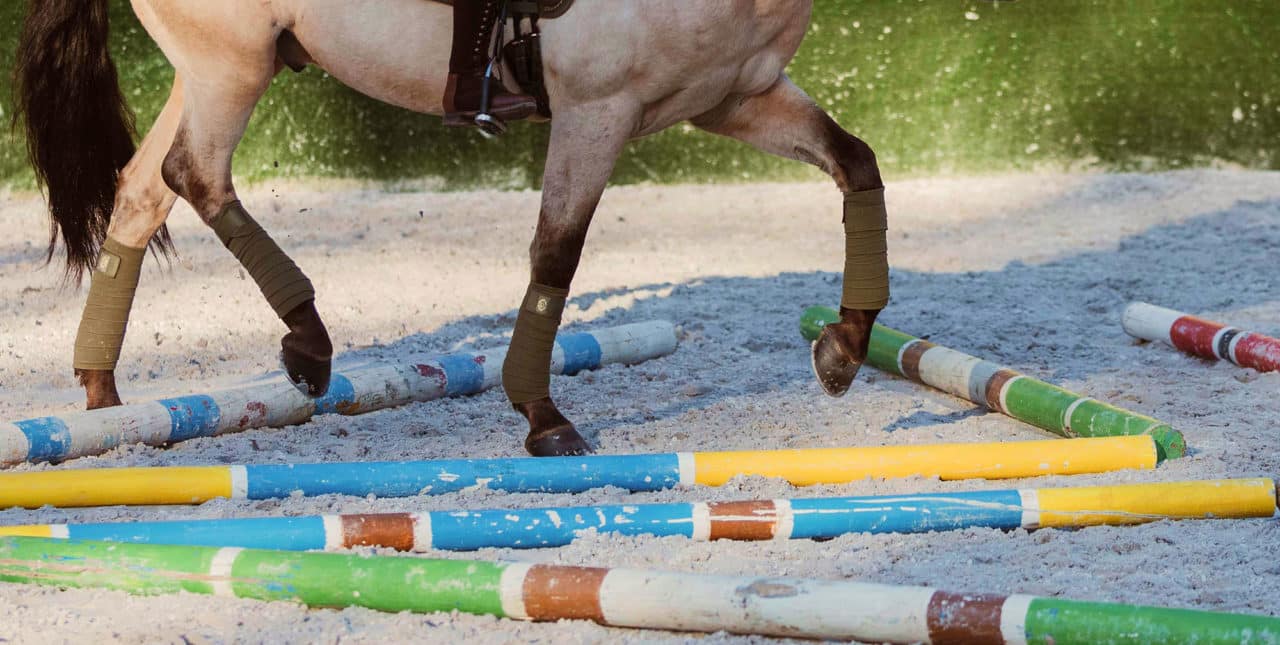Studies have shown that how you are training your horse affect the risk of injury. Lameness and back pain in the horse are the most common problems that you can easily avoid. Variety in training increases the total training effect and decreases the injury risk, both long and short term. Based on experience, using a variety of training exercises also helps promote mental motivation in both the horse and human athlete. How can you increase the variety of training for your horse and achieve soundness?
1. Gradually increase training
It is important that you increase the work gradually over the long-term and not overwork your horse to achieve short-term goals. Be extra careful with new ground, if your horse has been moved to a new stable (with a different arena surface), or after a longer rest. If the horse is not used to certain training the horse has to be used to use new muscle groups.
2. Vary the type of work
If you do a lot of repetitive work over long periods of time you can increase risk of injury both physically and mentally. Training with a variety of exercises promotes general strength and endurance to promote long term soundness. It’s also important to vary the exercises during the session. Train different exercises mixed with walk or trot with loose reins, to prevent lactic acid.
3. Skill specific training
It is important to build up specific groups of muscles, tendons and ligaments for the specific individual. This doesn’t mean a dressage horse should only be trained in dressage, see point 2. Depending on your goals, you need to create a training schedule that focuses both on your chosen discipline, and variation. For example, a dressage horse needs to build his buoyancy, collection and schwung over a long time, both through dressage schooling and polework/cavalettis. He also needs to build cardio and stamina out in nature, which will also improve the dressage work with both better core and motivation.
4. Individual adjustment planning
All horses are different and need different lengths of time to adjust to the training, both mentally and physically. Try different week schedules to find the best plan for your horse. Also, be aware of what motivates him. If your horse sees the training as the best part of his day, he’ll go all in!
5. Use different surfaces
A horse who is ridden in varied terrain and with different surfaces will increase the balance and coordination, which are important factors to prevent injuries. If you train in the same arena each day, the horse will be vulnerable when trained on a new kind of surface, for example if you start a competition or training at another arena. If you make sure to train in different arenas as well as different grounds in nature, both hard and soft, the horse’s legs and joints will be used to the variation and get a much lower risk of injury.
6. Continuity
Continuity is an important aspect of training if it is going to have any lasting affect. You can’t just saddle up once every other week and expect the horse to stay sound and improve the training results. You need a plan. Some horses need to train six days a week, others may prefer alternate training days and rest every other day. Even when training continuously, don’t set up jumps just twice a year. See point 1 and 3. For every movement you train, you need to add it to your weekly plan, start low and increase gradually.
7. Rest and recovery
It is also very important to include variety based in which training activity, volume, intensity, rest and recovery. All cells need rest between training to grow stronger. If you don’t give enough rest, the risk of injury is major. It’s therefor important to focus on different exercises for different muscle groups on different days, for example gridwork day 1, lateral work day 2, cardio day 3, and so on. The horse should have at least 1-2 days every week with no training at all, as long as he can get plenty of hours out in the pasture. A longer vacation once or twice a year will have a positive impact both physically and mentally.
